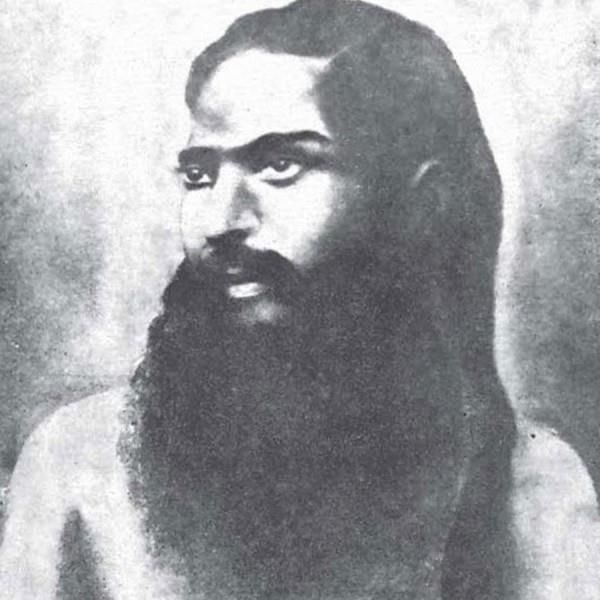UPSC Daily Current Affairs: 6th July 2025 | Current Affairs & Hindu Analysis: Daily, Weekly & Monthly PDF Download
GS3/Environment
Lessons from the Telangana Blast
Source: The Hindu
Why in News?
Recently, a devastating explosion occurred at Sigachi Industries, a pharmaceutical factory located in Pashamylaram near Hyderabad. This incident resulted in the destruction of a three-storey building and claimed the lives of 39 out of the 143 workers present at the time. Initially, Sigachi Industries denied allegations of a reactor explosion, asserting that the blast did not stem from reactor failure. An investigation is currently underway, led by a four-member expert committee headed by B. Venkateshwar Rao, an emeritus scientist from CSIR-IICT.
Key Takeaways
- The blast is part of a troubling pattern of industrial accidents in the pharmaceutical sector.
- Regulatory lapses may have contributed to the incident, highlighting the need for better safety protocols.
- Environmental management failures have severe implications for public health and safety.
Additional Details
- Recent Incidents:The Telangana blast follows a series of deadly accidents in nearby pharmaceutical units, including:
- SB Organics, Sangareddy (2024): 6 dead
- Anakapalli, Andhra Pradesh (Aug 2024): 17 dead
- Parawada, Andhra Pradesh (June 2025): 2 dead
- Cause of the Blast: Initially suspected to be a Boiling Liquid Expanding Vapour Explosion (BLEVE), forensic experts have now shifted focus to a potential dust explosion, likely triggered by microcrystalline cellulose, a highly combustible substance used in pharmaceuticals.
- Regulatory Compliance: Emergency responders faced challenges due to incomplete or missing environmental display boards, which are mandatory for providing critical information during emergencies. This lack of compliance delayed rescue efforts.
- Environmental Impact: Telangana is a significant hub for pharmaceutical production, accounting for one-third of India's output and a substantial portion of global vaccine production. However, the region faces ongoing environmental issues, with pollutants from pharma units degrading soil and water quality.
The Telangana blast serves as a stark reminder of the urgent need for a robust regulatory framework to ensure safety and compliance in the pharmaceutical sector. As India's pharmaceutical industry continues to grow, aligning this growth with stringent safety and environmental standards is essential to safeguard public health and maintain global credibility.
GS1/History & Culture
About Chautal
Source: The Hindu
Why in News?
Recently, the Prime Minister of India was welcomed in Trinidad and Tobago with a performance of the traditional Bhojpuri Chautal, highlighting its cultural significance and musical heritage.
Key Takeaways
- Chautal: A rhythmic framework composed of 12 beats.
- Usage: Commonly accompanies Dhrupad and Dhamar styles of singing and instrumental performances.
- Connection: Strongly associated with North Indian classical music, especially Hindustani classical music.
Additional Details
- Name Meaning: The term "Chautal" translates to "four claps," which refers to its structural division.
- Vibhag Structure:
- One perspective suggests it consists of four vibhags with patterns of 4, 4, 2, and 2 matras.
- Another viewpoint equates its structure to Ektal, proposing it has six vibhags of two matras each.
- Pakhawaj Tradition: Chautal is linked to the pakhawaj, which influences its heavy and powerful performance style, contrasting with the delicate style of the tabla.
Through this performance, the significance of Chautal in Indian classical music is reaffirmed, showcasing its unique rhythmic qualities and cultural heritage.
GS3/Economy
India Ranks 4th in Global Income Equality: World Bank Report
Source: TOI
 Why in the News?
Why in the News?According to a World Bank report, inequality in India has significantly decreased between 2011-12 and 2022-23, positioning India as the fourth-most equal country globally.
Key Takeaways
- India's Gini Index score is 25.5, indicating a substantial level of income equality.
- Over 171 million Indians have escaped extreme poverty in the past decade.
- Government welfare policies have played a crucial role in this achievement.
Additional Details
- Gini Index: This statistical measure is used to evaluate income inequality, where 0 indicates perfect equality and 100 signifies maximum inequality. India's Gini Index of 25.5 positions it in the "moderately low inequality" category.
- In comparison, other countries' Gini scores are as follows:
- China: 35.7
- United States: 41.8
- Government Schemes:Key initiatives contributing to this progress include:
- PM Jan Dhan Yojana: Created 55 crore bank accounts, enhancing financial access for rural and underbanked populations.
- Aadhaar-linked Direct Benefit Transfers (DBT): Enabled the efficient delivery of government benefits, saving over ₹3.48 lakh crore by March 2023.
- Ayushman Bharat: Provides ₹5 lakh in health insurance, with over 41 crore cards issued.
- PMGKAY: Distributed free food grains to over 80 crore beneficiaries, aiding food security and nutrition.
- Equity in Growth: India's approach balances economic reform with social protection, aiming for inclusive growth.
This progress is seen as a model for developing economies, demonstrating that targeted welfare policies can achieve significant reductions in inequality while promoting economic growth.
GS3/Environment
Green Climate Fund: Strengthening Climate Resilience
Source: Eco- Business
Why in News?
The Green Climate Fund (GCF) has recently approved over USD 120 million in new funding aimed at enhancing climate resilience in the countries of Ghana, the Maldives, and Mauritania. This initiative signifies a major step towards supporting developing nations in their climate action efforts.
Key Takeaways
- The GCF is the largest dedicated climate fund globally, established during COP 16 in Cancun in 2010.
- It operates as part of the financial mechanism of the United Nations Framework Convention on Climate Change (UNFCCC).
- The GCF aims to assist developing countries in achieving their Nationally Determined Contributions (NDCs) toward low-emission and climate-resilient development.
Additional Details
- Country-Driven Approach: A fundamental principle of the GCF is to follow a country-driven approach, empowering developing countries to lead in programming and implementation.
- Investment Allocation: The GCF mandates that 50% of its resources be allocated to mitigation efforts and 50% to adaptation, with at least half of the adaptation resources directed to the most climate-vulnerable countries, including Small Island Developing States (SIDS), Least Developed Countries (LDCs), and African States.
- The GCF is a legally independent institution, with a secretariat located in Songdo, South Korea, which began its operations in December 2013.
This funding initiative by the GCF marks a significant commitment to addressing climate change impacts and enhancing resilience in developing nations, furthering global efforts to combat climate change.
GS3/Economy
Promise and Pitfalls of the Employment-Linked Incentive Scheme
Source: The Hindu
 Why in News?
Why in News?The Union Cabinet has recently approved the Employment-Linked Incentive (ELI) scheme, which comes with a significant budget of ₹99,446 crore, as part of the 2024–25 Union Budget. The primary objective of this scheme is to enhance job creation, particularly in the manufacturing sector. It is a part of the Prime Minister's broader employment package, which includes initiatives for internships with major companies and youth skill development programs.
Key Takeaways
- The ELI scheme aims to create over 3.5 crore jobs within two years.
- It is set to be implemented from August 1, 2025, to July 31, 2027.
- The Employees Provident Fund Organisation (EPFO) will be responsible for implementing this scheme.
Additional Details
- Expected Beneficiaries: Approximately 1.92 crore newly employed individuals will benefit from the scheme.
- Employee Benefits:
- Eligibility for salaries up to ₹1 lakh/month.
- Incentive of one-month EPF wage (up to ₹15,000).
- Disbursal in two installments: the first after 6 months of service and the second after 12 months.
- Mode of payment will be direct bank transfer.
- A portion of the benefits will be allocated to a fixed deposit account, which is withdrawable later.
- Employer Incentives:
- Support of up to ₹3,000/month for each new employee retained for a minimum of 6 months, valid for two years.
- For manufacturing firms, incentives will extend into the third and fourth years as well.
- Employers have termed the ELI scheme as a commendable initiative that promotes first-time employment and sustained job creation in the manufacturing sector.
- Industry Insights:
- Experts suggest including micro and small manufacturing units, particularly those with fewer than 20 employees, to widen the benefits.
- There is a proposal to shift the scheme to the Ministry of MSME and adopt a structured reimbursement model based on payroll growth.
- Direct monthly subsidies tied to continued employment for both employers and employees could facilitate broader adoption.
- Trade Union Responses:
- The Bharatiya Mazdoor Sangh (BMS) has shown support for the scheme but calls for expanded social security and improved job quality.
- Ten other central trade unions have expressed concerns, highlighting risks associated with potential misuse of funds and unfavorable past experiences.
In conclusion, while the Employment-Linked Incentive Scheme presents significant opportunities for job creation and economic growth, it also faces challenges and skepticism from various stakeholders. The effectiveness of the scheme will depend on its implementation and the measures taken to ensure that it meets its objectives without compromising worker rights and benefits.
GS3/Economy
Understanding the Gini Index
Source: PIB
Why in News?
India has been recognized as the fourth most equal society globally, boasting a Gini Index of 25.5. This achievement places India ahead of all G7 and G20 nations, according to a recent World Bank report.
Key Takeaways
- The Gini Index measures the level of income inequality within a country.
- It ranges from 0 (perfect equality) to 1 (perfect inequality).
- India’s Gini Index has improved from 38 in 2011 to 25.5 in 2022.
Additional Details
- Gini Index: Also known as the Gini coefficient or Gini ratio, this metric evaluates income distribution across a population, developed by Italian statistician Corrado Gini in 1912.
- The index is based on the Lorenz curve, which illustrates the distribution of income or wealth. The cumulative income of the population is plotted against the population percentiles.
- India's performance in the Gini Index surpasses that of regional peers such as China, which has a Gini score of 35.7, and represents a significant step towards reducing income inequality.
- This improvement signals effective measures taken to bridge income gaps over the last decade.
In conclusion, India's Gini Index reflects a notable achievement in promoting income equality, emphasizing the importance of continuous efforts towards equitable economic development.
GS3/Environment
Controversy Over ISFR 2023 - Forest Rights Act (FRA) Blamed for Forest Cover Loss
Source: The Wire India
Why in News?
The India State of Forest Report (ISFR) 2023 has attributed a "negative" change in forest and tree cover partly to the implementation of the Forest Rights Act (FRA) of 2006. This assertion has elicited a strong rebuttal from the Ministry of Tribal Affairs, which has raised questions about the scientific validity of the claim and its potential implications for the implementation of the FRA.
Key Takeaways
- The ISFR 2023 highlighted a significant decline in dense natural forests in India.
- The Ministry of Tribal Affairs has contested the report's claims regarding FRA.
- There is a call for scientific evidence before drawing policy implications from the report.
Additional Details
- Findings of the ISFR 2023: The report indicates a loss of over 1,200 sq km of Mid-Dense Forest (MDF) and an equal area of Open Forest (OF) within the Recorded Forest Area (RFA). However, it noted an addition of over 2,400 sq km of Very Dense Forest. Additionally, outside the RFA, India lost approximately 64 sq km of Dense Forest and over 416 sq km of Mid-Dense Forest.
- Forest Rights Act (FRA), 2006: Officially titled the Scheduled Tribes and Other Traditional Forest Dwellers (Recognition of Forest Rights) Act, 2006, the FRA aims to recognize and grant rights to Forest Dwelling Scheduled Tribes (FDST) and Other Traditional Forest Dwellers (OTFD) who have historically occupied and used forest land.
- Major Points of Contention: The report's mention of FRA in the context of forest cover loss is unprecedented. The Tribal Affairs Ministry argues that the ISFR 2023 lacks scientific evidence and could reinforce biases against FRA implementation. The FRA is designed to acknowledge the existing rights of forest dwellers and does not legalize encroachments or introduce new rights that could jeopardize ecological balance.
- Reactions from Civil Society: Over 150 organizations have expressed their discontent with the claims made in the ISFR 2023, criticizing the Ministry of Environment, Forest and Climate Change (MoEFCC) for undermining the FRA through unverified conclusions. The Environment Ministry responded by stating that the ISFR 2023 indicates substantial increases in forest cover attributed to community-led conservation efforts.
The ongoing controversy underscores the delicate balance between environmental conservation and the rights of tribal communities. There is a pressing need for robust scientific validation before implementing policy changes to ensure the integrity of both forest governance and tribal rights under the FRA.
GS1/Geography
Tokara Islands Earthquake Activity
Source: Indian Express
 Why in News?
Why in News?Recently, the Tokara Islands in southern Japan have experienced an unprecedented seismic event, with over 1,000 earthquakes occurring in the last two weeks, raising concerns among residents and authorities.
Key Takeaways
- The Tokara Islands are located south of Kyushu and north of the Amami Islands in Japan.
- This archipelago is composed of seven inhabited islands and five uninhabited islands.
- Mount Otake, at 979 meters, is the highest peak in the island group.
- The climate is characterized by warm temperatures and significant rainfall, with low frost occurrence.
Additional Details
- Geographical Significance: The Tokara Islands form part of a seismic zone, making them one of the most seismically active regions globally.
- Inhabited Islands: The seven inhabited islands include Kuchinoshima, Nakanoshima, Suwanosejima, Tairajima, Akusekijima, Kodakarajima, and Takarajima.
- Climate Characteristics: The islands lie between subtropical and temperate zones, featuring an average annual temperature of 20°C and annual rainfall of approximately 2,700 millimeters.
- The administrative division encompassing these islands is known as Toshima-mura.
The ongoing seismic activity has prompted local officials and residents to remain vigilant and prepared for potential aftershocks and further geological events.
GS3/Science and Technology
Very Massive Stars
Source: Indian Express
 Why in News?
Why in News?A recent study highlights that 'very massive stars' or 'very luminous stars' are emitting a substantially greater amount of material throughout their lifecycle compared to previously understood levels.
Key Takeaways
- Very massive stars possess over 100 times the mass of the Sun.
- They consume their nuclear fuel at an accelerated pace, resulting in an average lifespan of only a few million years.
- Upon exhausting their nuclear fuel, these stars collapse to form black holes.
Additional Details
- Stellar Wind: These stars generate a powerful stellar wind capable of ejecting their outer layers into space.
- Influence on Surroundings: Despite their brief existence, very massive stars significantly impact their environment, pushing newly formed elements, including essential life components like carbon and oxygen, into the surrounding space.
- These stars are often seen as predecessors to black holes and can create black hole binaries, which orbit each other and produce detectable gravitational waves on Earth.
In summary, while very massive stars have short lifespans, their influence on the cosmos is profound, affecting star formation and the distribution of critical elements across the universe.
GS1/History & Culture
Alluri Sitaram Raju: A Revolutionary Leader
Source: The Hindu
 Why in News?
Why in News?The Defence Minister recently highlighted that the government has drawn inspiration from the legendary revolutionary Alluri Sitarama Raju by appointing Draupadi Murmu as the President of India, emphasizing the ideals he stood for.
Key Takeaways
- Alluri Sitaram Raju was a prominent Indian revolutionary who fought against British colonial rule.
- Born on July 4, 1897, in Bhimavaram, Andhra Pradesh, he led the Rampa Rebellion of 1922.
- He was a champion for the rights of Adivasis and opposed the oppressive 1882 Madras Forest Act.
Additional Details
- Rampa Rebellion: This uprising was a significant event where Raju mobilized Adivasis and farmers against British authorities, employing guerrilla warfare tactics.
- Nickname: He was affectionately known as "Manyam Veerudu" (Hero of the Jungle) due to his heroic actions and leadership.
- Legacy: Despite the suppression of the movement in early 1922, Raju's efforts raised political awareness among tribal communities and left a lasting impact on India's freedom struggle.
- After a prolonged resistance, he was captured in 1924 and executed, with his tomb located in Krishnadevipeta, near Visakhapatnam.
Alluri Sitaram Raju's valiant struggle against one of the most powerful empires of his time has been recognized widely. The British government acknowledged his strategic prowess in guerrilla warfare, which led to significant expenditures to suppress his movement, marking him as a formidable figure in India's fight for independence.
GS2/International Relations
3 by 35 Initiative
Source: Indian Express
Why in News?
The World Health Organization (WHO) has recently introduced the “3 by 35” initiative, aiming to tackle the consumption of tobacco, alcohol, and sugary drinks through increased taxation.
Key Takeaways
- The initiative calls for a minimum 50% increase in real prices of tobacco, alcohol, and sugary drinks by the year 2035.
- It aims to raise approximately US $1 trillion over the next decade through health taxes.
- The initiative focuses on reducing harmful consumption, saving lives, and generating essential public revenue.
Additional Details
- Mobilizing Countries: WHO and its partners will engage with heads of state, finance, and health ministries, as well as civil society, to create political momentum. Participating countries will benefit from peer learning and strategic support.
- Supporting Country-led Policies: Countries seeking assistance will receive tailored support to develop evidence-based health tax policies. Additionally, a shared knowledge platform will provide guidance, tools, and best practices.
- Building Commitment and Partnerships: The initiative promotes inclusive dialogue to shift public and political perceptions, foster cross-sector alliances, and enhance the role of civil society in advocating for sustainable health financing.
This initiative represents a significant step forward in public health policy, emphasizing the importance of tax measures as a means to improve health outcomes and generate revenue for essential services.
|
43 videos|5366 docs|1135 tests
|
FAQs on UPSC Daily Current Affairs: 6th July 2025 - Current Affairs & Hindu Analysis: Daily, Weekly & Monthly
| 1. What are the main lessons learned from the Telangana blast incident? |  |
| 2. Who was Alluri Sitaram Raju and what was his contribution to India's independence movement? |  |
| 3. How does the Gini Index measure income inequality, and what does a higher index indicate? |  |
| 4. What are the potential benefits and drawbacks of the Employment-Linked Incentive Scheme? |  |
| 5. What controversies surround the ISFR 2023 regarding the Forest Rights Act (FRA)? |  |
















